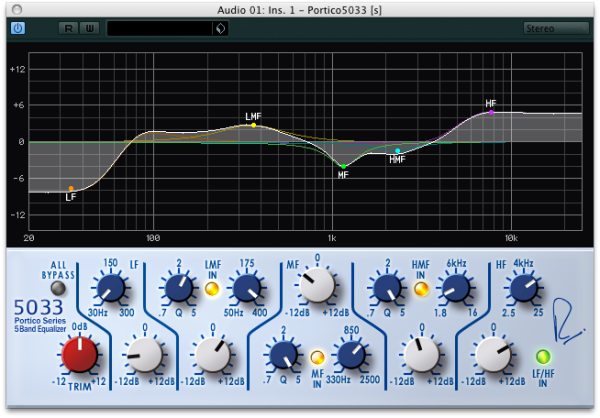What's The Point Of EQ In Your Mix?
Mar 19, 2014We all know we’re “supposed” to use EQ when mixing. We see the big boys using it in magazines, videos, etc. They come stock with our DAWs. They come built into our live consoles. Clearly EQ is a normal tool for the mixing engineer. But why? What’s the point and how should we be using it in our mixes?

Tone Balancing
To begin with, the term EQ stands for “equalizer” so we have a pretty good idea of what its role is. The EQ exists to equal out the tone of each instrument. It’s a tool to balance your audio out perfectly. And, as we established earlier, all you’re doing in mixing is balancing.
So at its core, EQ is simply another weapon at your disposal to bring your tracks into perfect balance so the listener hears all your parts with clarity. Just like with a guitar amp, whose tone controls help you get the most balanced guitar tone possible, your EQ plugins help bring the best tonal balance to your mix.
Frequency Unmasking
One common frustration I ran into in my early years of mixing, was how I could have great sounding individual tracks that didn’t sound so great when played together. In fact, it seemed the more tracks I added, the more muddy my mix became. The problem was masking.
There is so much frequency overlap from instrument to instrument. One of the biggest reasons an EQ is so helpful, is because you can remove overlapping frequencies and “carve out space” for everything. A common example is the bass guitar that is covering up the kick drum. With some slight EQ tweaks on both, each instrument can occupy its own small slot in the audio spectrum and pop out to the listener with clarity.
This is why I’m a huge fan of subtractive EQ, because it focuses on freeing up space for everything to live.
Mix Control
One final reason to use EQ is for control over your mix. What do I mean by control? Simply this: audio can be wildly untamed. Frequencies can pop out at any minute and be louder than other frequencies, like bursts of sound. Think of a bass guitar that sounds relatively controlled unless it plays a certain note that pushes out more sound than others. It can seem like the bass got too loud in that moment.
EQ can control these tonal bursts and give you a more controlled (and therefore more palatable) track. Whether it’s a bit of harshness in the guitars, some low end mud on a vocal, or the unruly bass guitar I just mentioned, finding the out of control frequencies, and dialing only them back can give you a more polished mix.
What They Don’t Hear
The truth about EQ is that, when executed correctly the listener will never hear it. When done well, no one will every notice your hard work with EQ. It’s what you don’t hear that can make or break your final mix. Once you understand this subtle approach to EQ, you’ll wield it with more intentionality and effectiveness.
Discover The 6 Steps for Creating a
Radio-Ready Song from Scratch"
Enter Your Email Below To Receive The Free 17-page PDF,
"6 Steps To A Radio-Ready Song"
We hate SPAM. We will never sell your information, for any reason.

